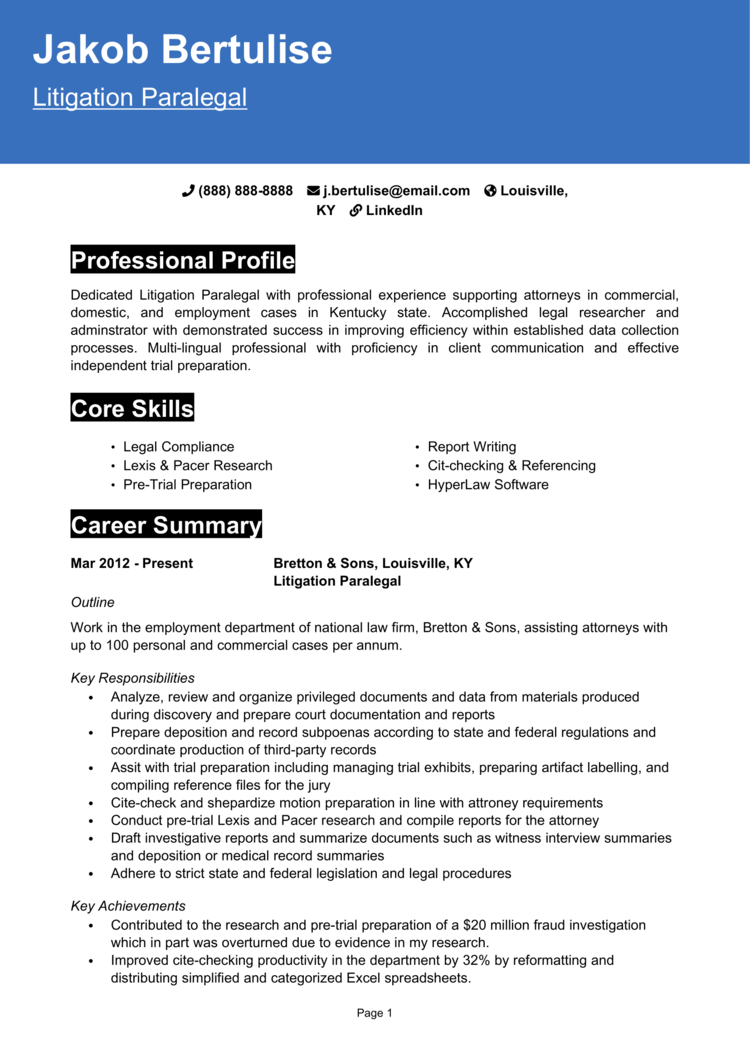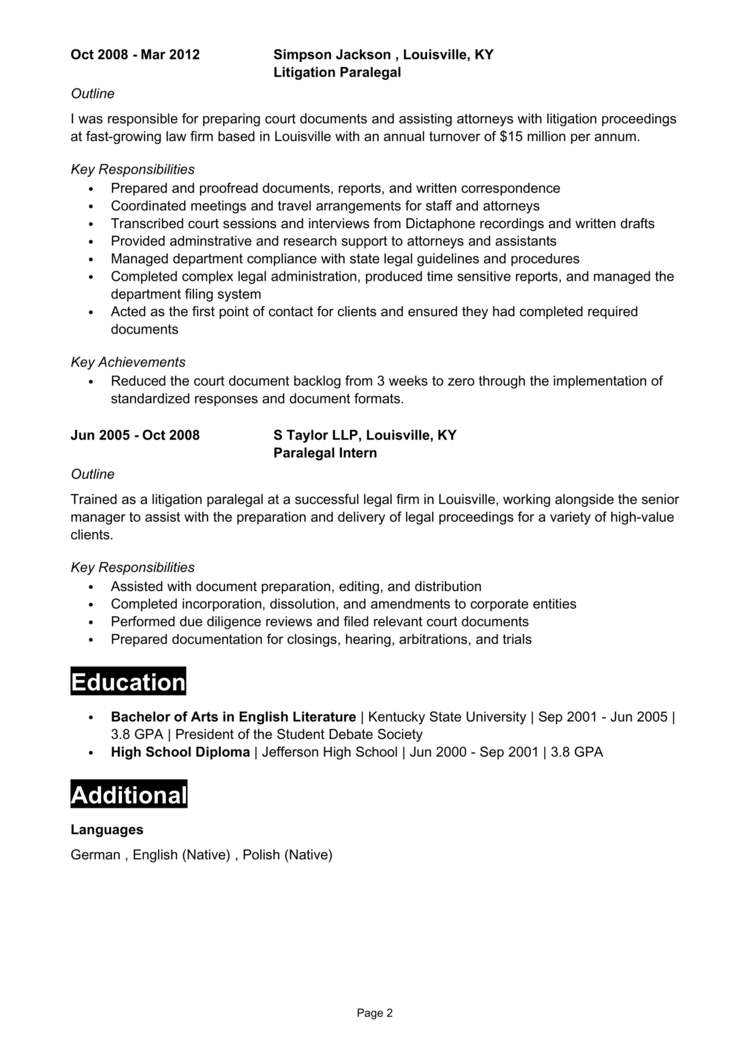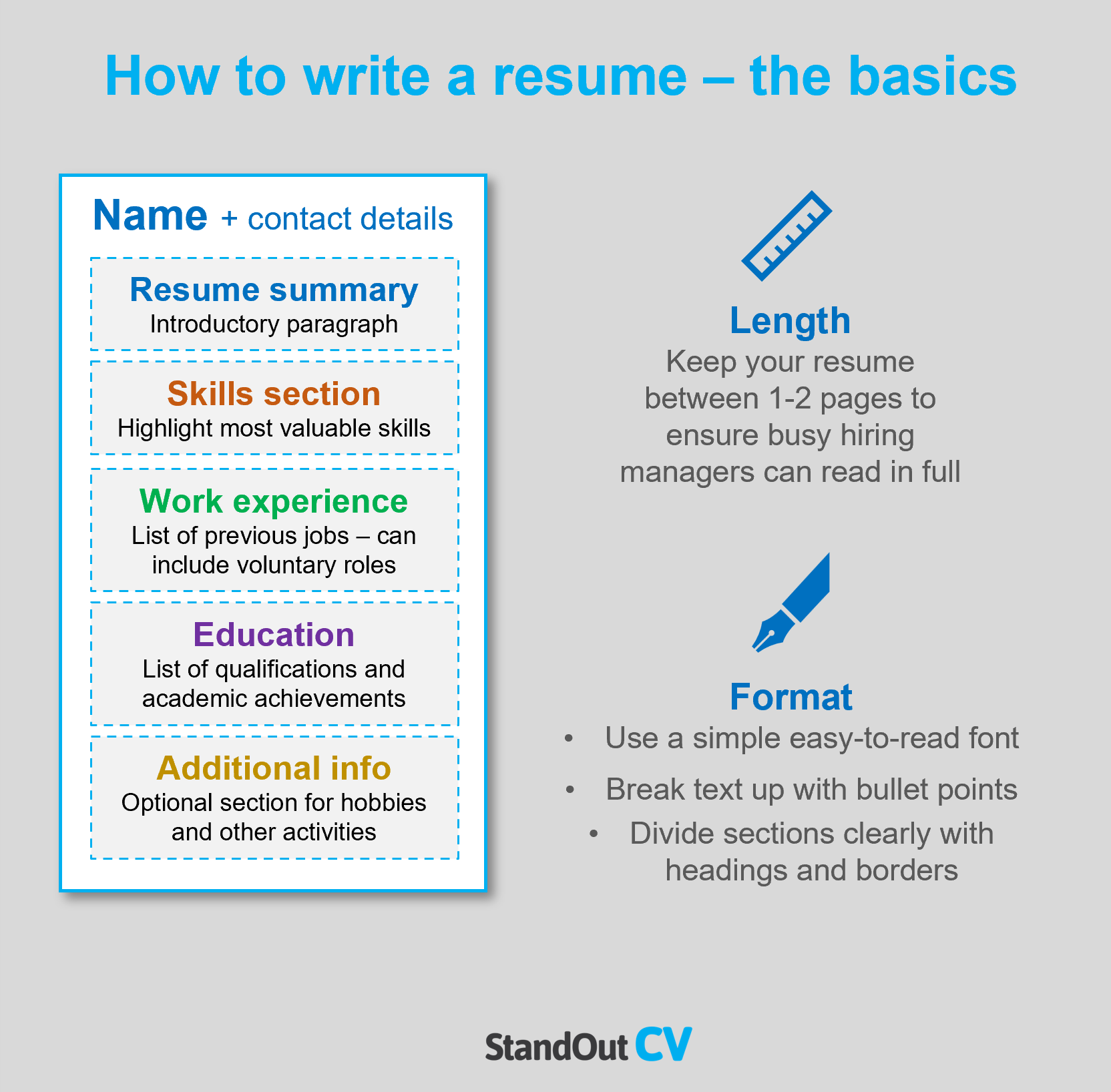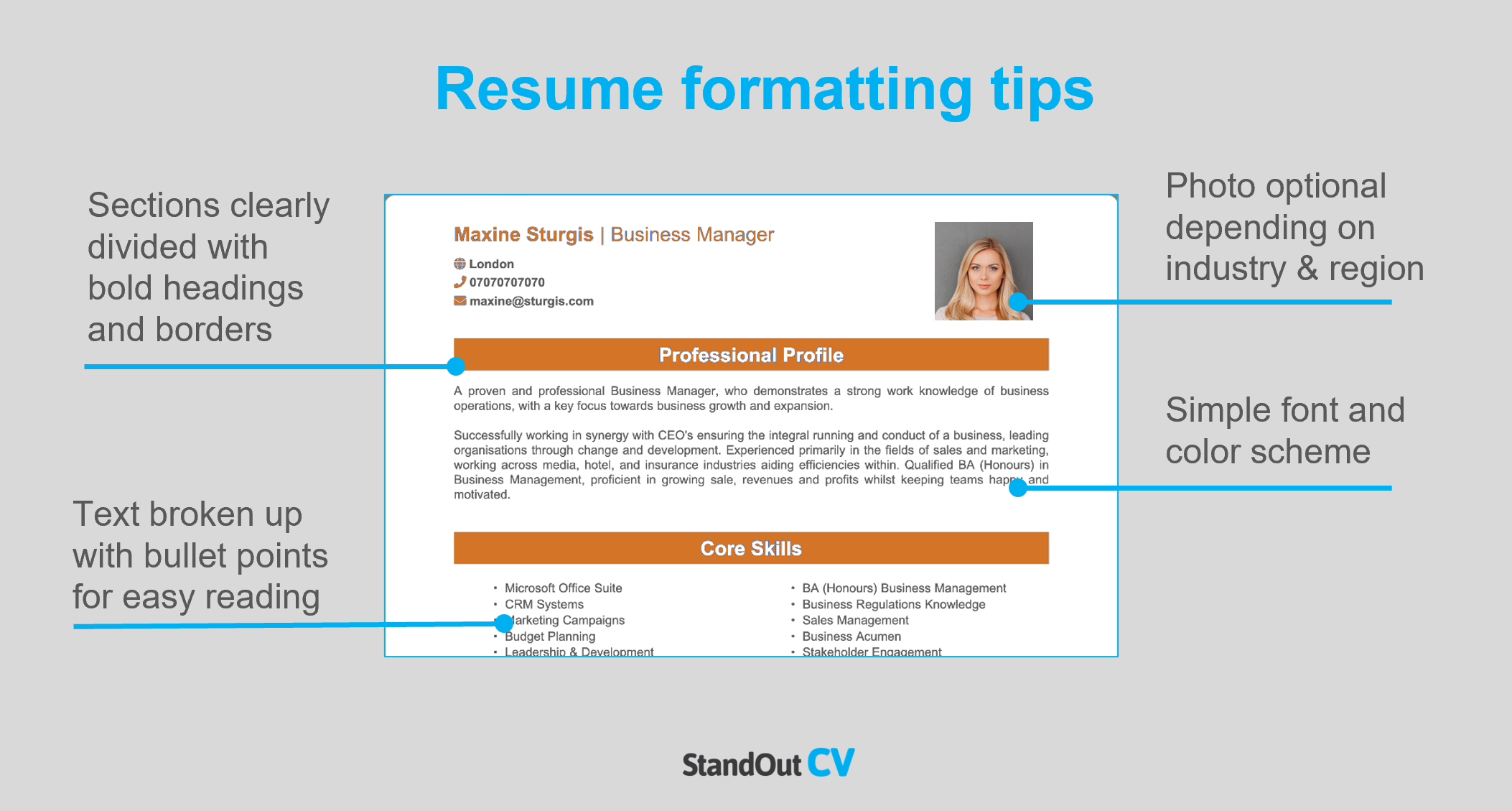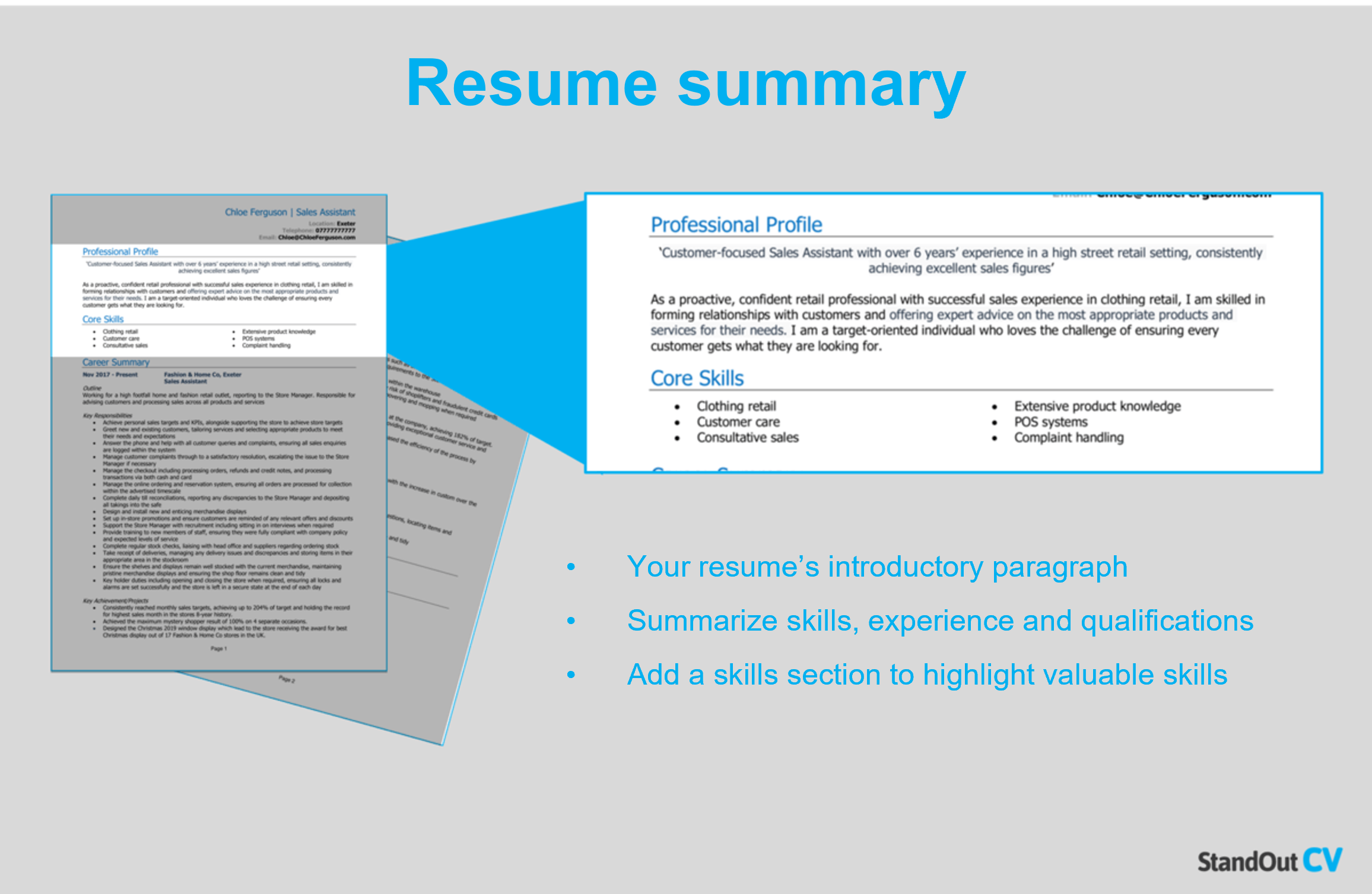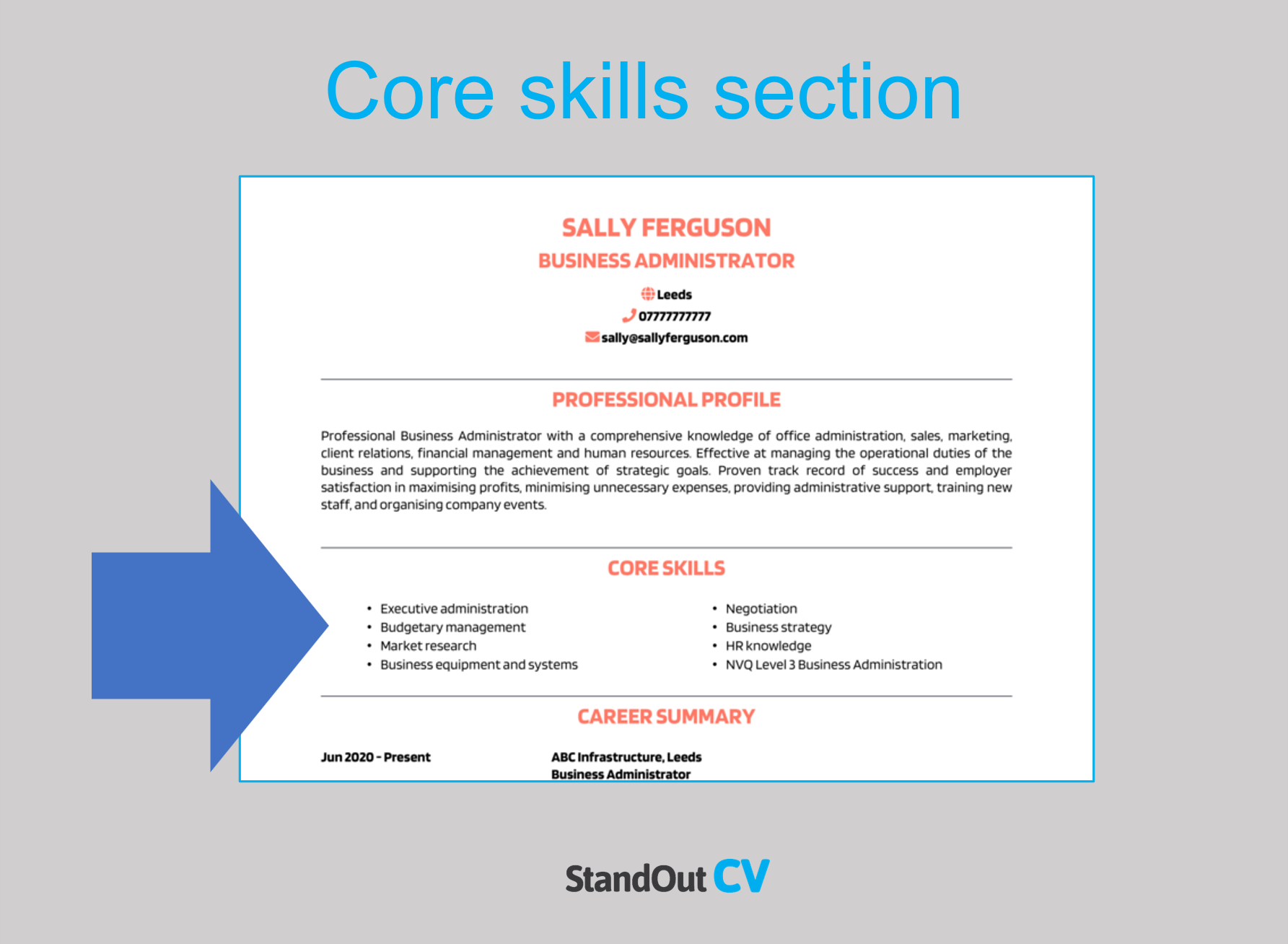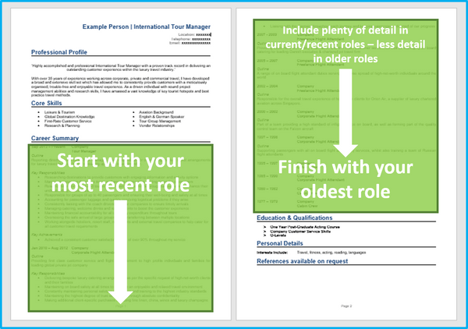You’re ready to take the next step in your legal career and secure yourself a position as a litigation paralegal.
But in order to do this, you need to build your case with the recruiter and convince them that you’re the best person for the job.
This will require a strong application. So make the most of our litigation paralegal resume example and writing tips in the guide below.
Contents
|
Litigation Paralegal Resume Example
This example Litigation Paralegal resume is well-structured to provide a pleasant reading experience for recruiters, and contains all of the crucial information they want to see.
The rest of the guide will show you exactly how you can achieve this in your own resume.

Litigation Paralegal resume layout and format
Formatting and structuring your resume correctly is key to landing job interviews.
Your resume needs to look attractive, but more importantly it needs to be easy for recruiters and hiring managers to read and digest the information.
These tips will help you to do that:
Formatting your resume for success
- Length: Recruiters often see hundreds of resumes per day – so keep yours under 2 pages in length, if you want to ensure it gets read in full.
- Font & readability: A readable resume is crucial if you want recruiters to see your important skills. Ensure yours is easy to read by using a simple, clear font and breaking up the text with bullet points and short paragraphs.
- Layout & Structure: While creating an attractive resume, it is crucial not to compromise functionality for design. To ensure both, use bold headings and borders to structure the page into clear sections.
- Photos: You don’t have to add a photo to your resume in the States, but some regions and industries like to see them.
Quick tip: Achieving a professional look for your resume can be difficult and time-consuming. If you want to create an attractive resume quickly, try our quick-and-easy Resume Builder and use one of their eye-catching resume templates.
Resume layout
Include the following sections when you write your resume.
- Name and contact details – Make it easy for employers to contact you, by putting these at the top.
- Resume summary – An intro paragraph sitting at the top of your resume, summarizing the reasons why you should be hired.
- Skills section – A short snappy list of your most important skills, that can be quickly digested
- Work experience – Reverse chronological list of your previous jobs – voluntary work and college placements can be included if you have no paid experience.
- Education – List your qualifications and professional training.
- Additional info – An optional section for things like hobbies and interests.
Here’s what to include in each part of your resume.
Contact Details
Add your name and contact details to the very top of your resume, making it easy for recruiters to get in touch
- Name and profession title
- Cell phone number – or another number you can answer quickly
- Location – Add your local area such as San Diego or New York – not your full address as that will take up too much space.
- Email address – Use your name or close variation – no nicknames from high school.
You can add a link to your LinkedIn profile if you have one – you do not need to include personal details like date of birth or marital status.
Litigation Paralegal Resume Summary
Your resume summary is like your introduction to the recruiter or hiring manager – it should grab their attention and leave them eager to read more about you.
Achieve this by writing a snappy overview of your skills, knowledge and what value you can bring to an employer.
How to create a resume summary that will get you noticed:
- Keep it short: Your summary is intended to be a high-level introduction to hook readers’ attention, so keep it brief (4-7 lines) – save the details for later in your resume.
- Tailor to target jobs: To make your resume more relevant to your target jobs, analyze the job description and include as many matching skills as possible.
- Avoid using cliches: You may be a “team player who always give 110%” but generic phrases don’t tell employers much about you in reality – stick to factual information.
Example resume summary for Litigation Paralegal
What to include in your Litigation Paralegal resume summary?
- Summary of experience: Provide an overview of the type of work you have done in the past and the impact you have made at previous employers.
- Relevant skills: Scatter your most in-demand Litigation Paralegal skills through your summary to ensure they are noticed quickly by hiring managers.
- Qualifications: Mention any Litigation Paralegal qualifications that are important to your profession in the summary briefly, to show you are qualified to carry out the role.
Quick tip: Choose from hundreds of pre-written summaries across all industries, and add one to your resume with one-click in our quick-and-easy Resume Builder. All written by recruitment experts and easily tailored to suit your unique skillset and style.
Core skills section
In addition to your resume summary, your core skills section provides an easily digestible snapshot of your skills – perfect for grabbing the attention of busy hiring managers.
As Litigation Paralegal jobs might receive a huge pile of applications, this is a great way to stand out and show off your suitability for the role.
It should be made up of 2-3 columns of bullet points and be made up of skills that are highly relevant to the jobs you are targeting.
Best skills for your Litigation Paralegal resume
Case Management – managing all aspects of litigation cases, including organizing and tracking case files, conducting legal research, preparing legal documents, and ensuring timely filing of pleadings.
Document Review – conducting complex document reviews, including managing large volumes of electronic and hard copy documents, reviewing documents for responsiveness and privilege, and preparing documents for production.
Trial Preparation – preparing for trials, including organizing exhibits, preparing witness lists, and conducting research to support trial arguments.
Legal Writing – drafting legal documents, such as complaints, motions, and briefs, and proofreading and editing for accuracy and clarity.
Use of Legal Software – maintaining knowledge of legal tools and software, including managing electronic data, responding to requests, and maintaining the chain of custody for electronic evidence.
Quick tip: Our quick-and-easy Resume Builder contains thousands of in-demand skills for every profession that can be added to your resume in seconds – saving you time and greatly improving your chances of landing job interviews and getting hired.

Work experience
So, you’ve got the recruiter interested with your catchy summary… Great work.
Now it’s time to show them the impact you make in the workplace by listing out your previous jobs and what you achieved in each one.
If you have tons of experience, you can condense this part down to the last few years – if you are junior, then you should include as much possible (even volunteering and school work placements)
Structuring your jobs
You probably do a lot in your job, so its vital to break all of that information down into a good structure.
Structure your jobs as follows to make it easy for recruiters to skim through and pinpoint the essential info.
Job outline
Kick off each role with a high-level overview to summarize the focus of the job, what the organization/department does, and how you fit into the bigger picture.
Key responsibilities
Then delve into the detail of your job by listing out easy-to-read bullet points which show how you apply your skills in the workplace.
Tailor these bullet points to focus on the skills and knowledge that are required in the jobs you are applying for.
Key achievements
Round off each job by adding some impressive achievements you made in the role.
Anything you’ve done that has made a big impact on your employer will make a good impression, think; generating revenue, saving costs, or improving a product.
Quantify your achievements with number where possible e.g. “reduced call wait time by 10%”
Example job for Litigation Paralegal resume
Outline
Work in the employment department of national law firm, Bretton & Sons, assisting attorneys with up to 100 personal and commercial cases per annum.
Key Responsibilities
- Analyze, review and organize privileged documents and data from materials produced during discovery and prepare court documentation and reports
- Prepare deposition and record subpoenas according to state and federal regulations and coordinate production of third-party records
- Assist with trial preparation including managing trial exhibits, preparing artifact labelling, and compiling reference files for the jury
- Cite-check and sherardize motion preparation in line with attorney requirements
Quick tip: Create impressive job descriptions easily in our quick-and-easy Resume Builder by adding pre-written job phrases for every industry and career stage.
Education section
After your work experience, add your education section.
If you are an experienced professional, you can keep this part short – adding basic details of each qualification.
If you have little or no experience, bulk this section up by adding more detail and highlight important skills and knowledge for your target jobs.
Additional information
The bottom of your resume is a place to add any “additional info”
Any other info that didn’t fall into any of the previous sections can be added here.
If you have hobbies that are related to your profession or any awards or publications – add them here.

Writing your own Litigation Paralegal resume
A winning Litigation Paralegal resume should look great, read well, and sell your skillset to hiring managers.
If you follow the steps above, you should be able to bag yourself a top job in no time.
And don’t forget you can use our quick-and-easy Resume Builder if you want to save time and ensure your resume contains the very best content.
Good luck with your job search!
